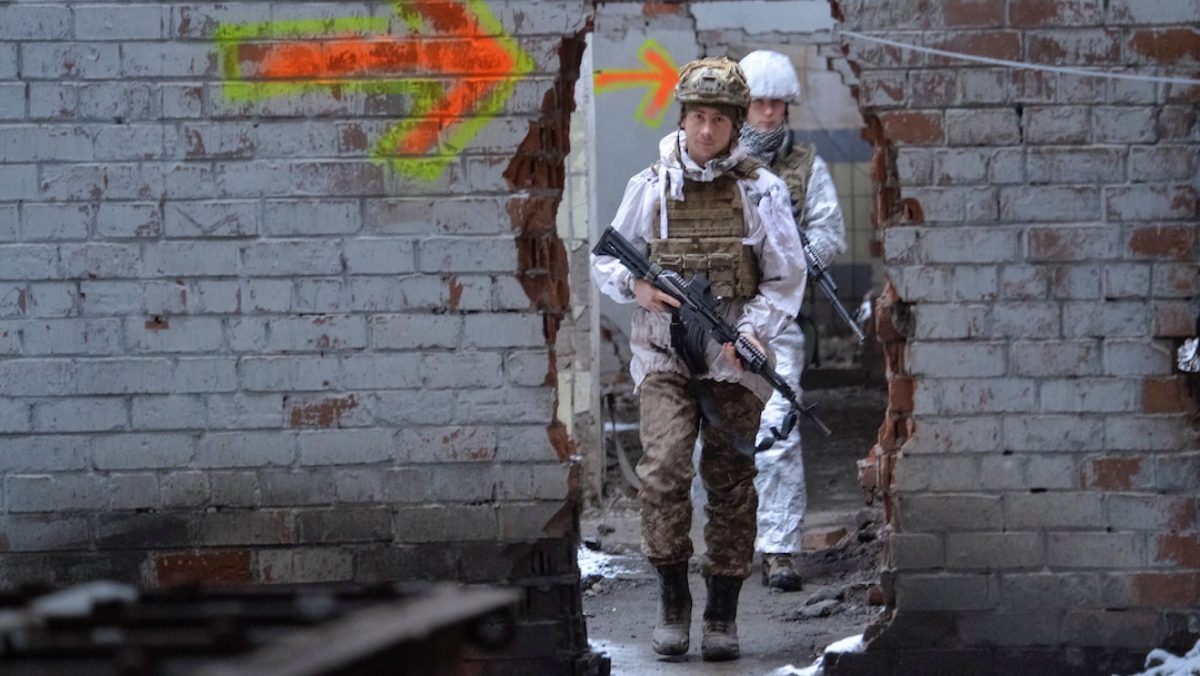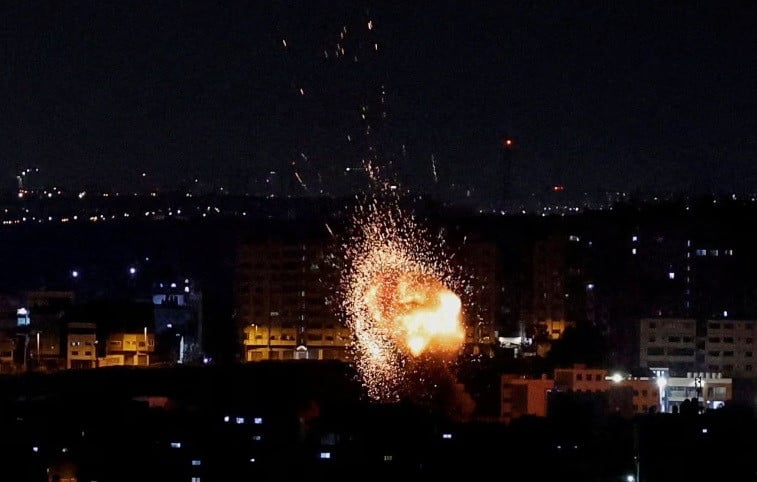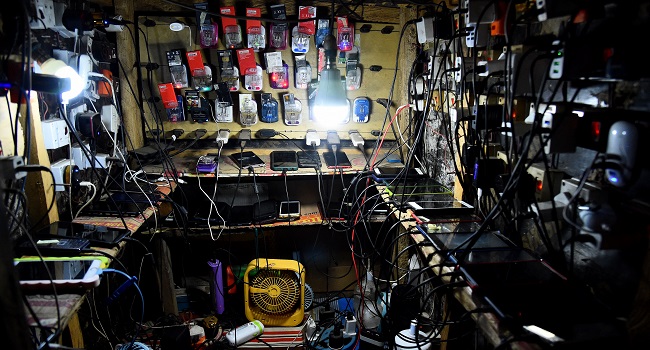
New York: After a year that saw an assault on the U.S. Capitol, horrific bloodshed in Ethiopia, a Taliban triumph in Afghanistan, great-power showdowns over Ukraine and Taiwan amid dwindling U.S. ambition on the global stage, COVID-19, and a climate emergency, it’s easy to see a world careening off the tracks.
But maybe one could argue things are better than they seem.
After all, by some measures, war is in retreat. The number of people killed in fighting worldwide has mostly declined since 2014—if you count only those dying directly in combat. According to the Uppsala Conflict Data Program, figures through the end of 2020 show battle deaths are down from seven years ago, mostly because Syria’s terrible slaughter has largely subsided.
The number of major wars has also descended from a recent peak. Despite Russian President Vladimir Putin menacing Ukraine, states rarely go to war with one another. More local conflicts rage than ever, but they tend to be of lower intensity. For the most part, 21st-century wars are less lethal than their 20th-century predecessors.
Still, if these are silver linings, they’re awfully thin.
Battle deaths, after all, tell just a fraction of the story. Yemen’s conflict kills more people, mostly women and young children, due to starvation or preventable disease than violence. Millions of Ethiopians suffer acute food insecurity because of the country’s civil war. Fighting involving Islamists elsewhere in Africa often doesn’t entail thousands of deaths but drives millions of people from their homes and causes humanitarian devastation.
- Ukraine
Whether Russia, which has been massing troops on the Ukrainian border, will again invade its neighbor remains unclear. But dismissing the menace as a bluff would be a mistake.
The Ukraine war began in 2014 when Putin, angered at what he saw as a Western-backed overthrow of a president friendly to Moscow, annexed Crimea and backed separatists in Ukraine’s eastern Donbass region. Facing a military rout, Ukraine signed two peace accords, the Minsk agreements, largely on Russia’s terms. Since then, separatists have held two breakaway areas in the Donbass.
- Ethiopia
Two years ago, Ethiopia was a good news story. Ethiopian Prime Minister Abiy Ahmed appeared to be turning the page on decades of repressive rule. Instead, more than a year of fighting between Abiy’s federal army and forces from the northern Tigray region has torn the country apart. A small window may have just opened up to bring the war to a close.
Battlefield dynamics have fluctuated dramatically. Abiy first ordered federal troops into Tigray in November 2020 following a deadly attack on a military garrison there by loyalists of the region’s ruling party, the Tigray People’s Liberation Front (TPLF). Federal forces, supported by troops from enemy-turned-friend Eritrea, quickly advanced alongside forces from Ethiopia’s Amhara region, which borders Tigray, installing an interim administration in the Tigrayan capital, Mekele, in December 2020.
- Afghanistan
If 2021 brought one chapter of Afghanistan’s decades long tragedy to a close, another is starting. Since the Taliban’s seizure of power in August, a humanitarian catastrophe has loomed. U.N. data suggests millions of Afghan children could starve. Western leaders shoulder much of the blame.
The Taliban’s win was swift but long in the making. For years, and especially since early 2020, when Washington signed a deal with the Taliban pledging to withdraw U.S. forces, insurgents advanced through the countryside, encircling provincial and district centers. In the Spring and Summer of 2021, they began seizing towns and cities, often persuading Afghan army commanders demoralized by the impending end of Western support to surrender. The government collapsed in mid-August, and the Taliban entered Kabul mostly without a fight. It was a stunning end to a political order Western powers had spent two decades helping to build.
The world responded to the Taliban’s takeover by freezing Afghan state assets, halting budgetary aid, and offering only limited sanctions relief for humanitarian purposes. (The Taliban are sanctioned by the United Nations and Western governments.)
- The United States and China
Shortly after pulling out of Afghanistan, the United States announced a new pact with Australia and the United Kingdom to counter China. Known as AUKUS, the deal will help Canberra acquire nuclear-powered submarines. It was a stark illustration of Washington’s aspirations to move from combating Islamist militants to major power politics and deterring Beijing.
In Washington, one of the few views shared across the aisle is that China is an adversary the United States is inexorably at loggerheads with. U.S. leaders see past decades of engaging China as enabling the rise of a rival that exploits international bodies and rules to its own ends, repressing opposition in Hong Kong, behaving atrociously in Xinjiang, and bullying its Asian neighbors. Competition with China is becoming an ordering principle of U.S. policy.
Biden’s China strategy, while not precisely articulated, entails keeping the United States the dominant power in the Indo-Pacific, where Beijing’s military capacity has ballooned. Biden appears to see the costs of Chinese regional primacy as graver than the risk of confrontation. Concretely, that meant shoring up U.S. alliances and partnerships in Asia as well as elevating the importance of Taiwan’s security to U.S. interests. Top officials also make stronger statements backing Southeast Asian countries’ maritime claims in the South China Sea.
- Iran vs. the United States and Israel
The nail-biting brinkmanship between Tehran and Washington instigated under Trump may be over. But as hope of reviving the Iran nuclear deal fades, another escalation looms.
Biden took office pledging to rejoin the nuclear deal. His predecessor had unilaterally withdrawn Washington in 2018, reimposing sanctions on Iran—which, in turn, stepped up its nuclear development and power projection across the Middle East. The Biden administration lost time posturing about who should make the first move and refusing substantive goodwill gestures. Still, for a few months, talks made some progress.
- Yemen
Yemen’s war faded from headlines in 2021 but remains devastating and could be poised to get worse.
Houthi rebels have encircled and advanced into the oil- and gas-rich governorate of Marib. Long underrated as a military force, the rebels appear to be running an agile and evolving multifront campaign, pairing offensives with outreach to soften local tribal leaders’ resistance. They now control Al-Bayda, a governorate neighboring Marib, and have made inroads into Shabwa, farther east, thus cutting off supply lines to Marib. Of Marib governorate itself, only the main city and hydrocarbon facilities nearby remain in the hands of President Abed Rabbo Mansour Hadi’s internationally recognized government.
Should those sites fall, it would mark a sea change in the war. The Houthis would score an economic as well as a military victory. With Marib’s oil and gas, the Houthis will be able to bring down fuel and electricity prices in areas under their control, thus bolstering their image as a governing authority deserving of international legitimacy. The loss of Marib, the Hadi government’s last bastion in the north, would likely herald the president’s political demise.
- Israel-Palestine
This past year saw the fourth Gaza-Israel war in just over a decade*, illustrating again that the peace process is dead and a two-state solution looks less likely than ever.
The trigger for this latest outbreak was occupied East Jerusalem. The threatened eviction of Palestinian residents of the Sheikh Jarrah neighborhood coincided in April 2021 with clashes during Ramadan between stone-throwing youth and Israeli police using lethal force on the compound that comprises the Haram al-Sharif, holy to Muslims, and the Temple Mount, holy to Jews.
- Haiti
The Caribbean nation has long been tormented by political crises, gang warfare, and natural disasters. Nevertheless, this past year stands out for many Haitians as particularly bleak. Few expect a brighter 2022.
In July, hit men assassinated President Jovenel Moïse in his home; his security detail apparently did nothing about it. Shellshocked elites squabbled over who would run the country. (Succession lines were muddled as Moïse had appointed Ariel Henry as his new prime minister but Henry had not yet been sworn in.) Henry eventually became the country’s interim leader but has struggled to assert authority.
An earthquake in August destroyed much of southern Haiti. Rampant kidnappings by gangs that lord over much of the capital of Port-au-Prince have hampered international relief efforts. Criminals’ seizure of oil terminals brought the country to a standstill in early November. Haiti, meanwhile, lags behind the rest of the Americas in distributing COVID-19 vaccines. Increasing numbers of Haitians are seeking better prospects abroad; many new departures—and indeed many Haitians who left the island some time ago—are camped out along the southern U.S. border.
- Myanmar
Since the February 2021 coup, a crackdown by the country’s military (known as the Tatmadaw) on mostly peaceful protests has fueled broad-based resistance, ranging from civil disobedience to armed clashes with security forces. A deadly stalemate exacts a terrible human toll.
If the generals hoped to reboot Myanmar’s politics, they miscalculated. Piqued at Aung San Suu Kyi and her National League for Democracy’s landslide win in the November 2020 elections, military leaders called the vote rigged and detained civilian politicians. Their plans for new elections seemingly aimed to install friendlier faces to power. Instead, mass protests against military involvement in politics rocked towns and cities. A crackdown resulting in hundreds of deaths fueled fiercer resistance.
Since then, deposed lawmakers set up their own National Unity Government (NUG) and in September called for revolt against the regime. While the NUG is still developing its own military capability, resistance forces, many of which support the NUG but are mostly not under its direct control, stage attacks daily, ambushing military convoys, bombing regime-linked targets, and assassinating local officials, suspected informants, and others they see as junta loyalists.
- Islamist militancy in Africa
Since 2017, when the Islamic State lost its so-called caliphate in the Middle East, Africa has suffered some of the world’s most ferocious battles between states and jihadis. Islamist militancy on the continent is nothing new, but revolts linked to the Islamic State and al Qaeda have surged in recent years.
Weak states struggle against nimble militant factions across vast hinterlands where central governments hold little sway. Parts of the Sahel have seen spiraling bloodshed, mostly due to fighting involving jihadis, whose reach has extended from northern Mali to the country’s center, into Niger, and across rural Burkina Faso.
Boko Haram’s insurgency has lost the swaths of northeastern Nigeria it controlled some years ago, and the movement has fractured. But splinter groups still wreak tremendous harm around Lake Chad. In East Africa, al-Shabab, the continent’s oldest-surviving Islamist rebellion, remains a potent force, despite more than 15 years of efforts to defeat it. Crisisgroup.org


